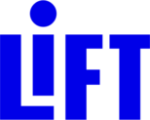A few weeks ago, I traveled with two of my National Program Team colleagues to California to get schooled on something called “improvement science”, which is an approach (and growing movement!) to get better at getting better.
At the Carnegie Foundation Summit, we studied several examples from the healthcare and education fields where well-intentioned, research-supported ideas were activated quickly from the top, but with an inadequate implementation strategy, diffuse buy-in, limited capacity to execute, insufficient supports, and an unrealistic timetable. Sound familiar? We’ve certainly felt this phenomenon extended to the anti-poverty arena and, yes, even at times to LIFT. But, we also felt inspired by the case studies that showed us how a focus on excellent implementation and a deliberate shift to a continuous learning frame could help organizations like ours move beyond good ideas to reliably great results.
Over the next week, I’ll be sharing the National Program Team’s takeaways in a series we’d like to call, “Getting Better at Getting Better: Reflections from the Carnegie Foundation Summit”. Let’s dig in…
Good ideas are necessary, but not sufficient. Right now, we have lots of good ideas and promising pilots proliferating across the nationwide network. But, we have an incredible opportunity to better capture the learnings, refine them, and transform them into wider organization-level improvements that can help more of our Members succeed. While we know that work is a marathon not a sprint, we did come away with some tools & methodologies that can help us create the kind of learning environment we need to make innovation work even better at LIFT. Here are the six key principles underlying this learning approach:
- Make the work problem-specific and user-centered. It starts with a single question: “What specifically is the problem we are trying to solve?” so you can start to envision a solution that fits the people you serve.
- Focus on variation in performance. The critical issue is not what works, but rather what works, for whom and under what set of conditions.
- See the system that produces current outcomes. It’s hard to improve what you do not fully understand and it’s easy to believe that individual choice is what drives so many things that go wrong in program and in life. Improvement science asks practitioners to understand the context in which different components interact because the context can change everything.
- We cannot scale what we cannot measure. Embed measures of key outcomes and processes to track if change is an improvement.
- Use disciplined inquiry to drive improvement. Engage rapid cycles of Plan, Do, Study, Act (PDSA) to learn fast, fail fast, and improve quickly. That failures may occur is not the problem; that we fail to learn from them is.
- Accelerate learnings through networks. Embrace the wisdom of crowds. We can accomplish more together than even the best of us can accomplish alone.
A lesson from healthcare: Every patient is unique, but not every problem is unique. For most of its history, the practice of medicine assumed every physician was an artist, necessarily responding to the unique needs of each patient with a personalize approach every time. However, recently the field has begun to identify common processes to help ensure quality (i.e., a surgery checklist). These structures were at first seen as taking away from a healthcare provider’s ability to treat patients as individuals. But, with time, the field has proven that by standardizing some elements, a higher quality of care is achieved. This is in part because the standardized process spreads proven best practices across all teams, supporting a level of quality through team accountability. And perhaps more importantly, having the small, predictable decisions standardized frees healthcare providers to focus on the more complex and challenging components of each case.
Want to learn more about improvement science? Check out the Carnegie Foundation’s website for more info, read part two of this series, and part three.
